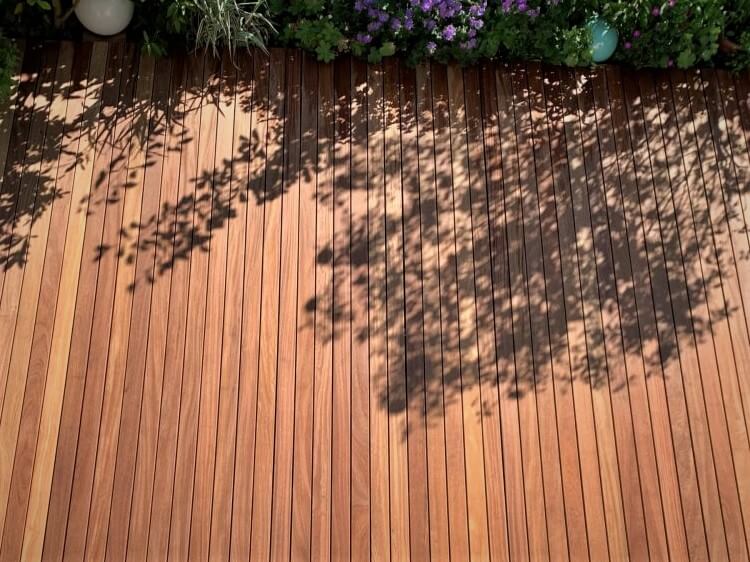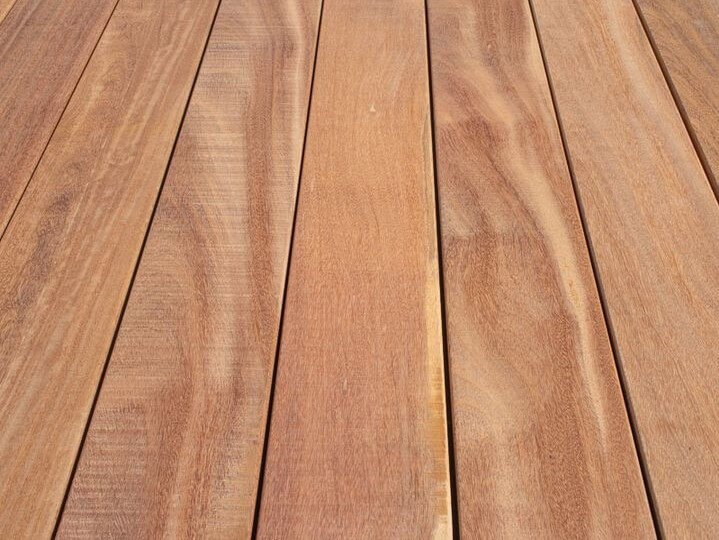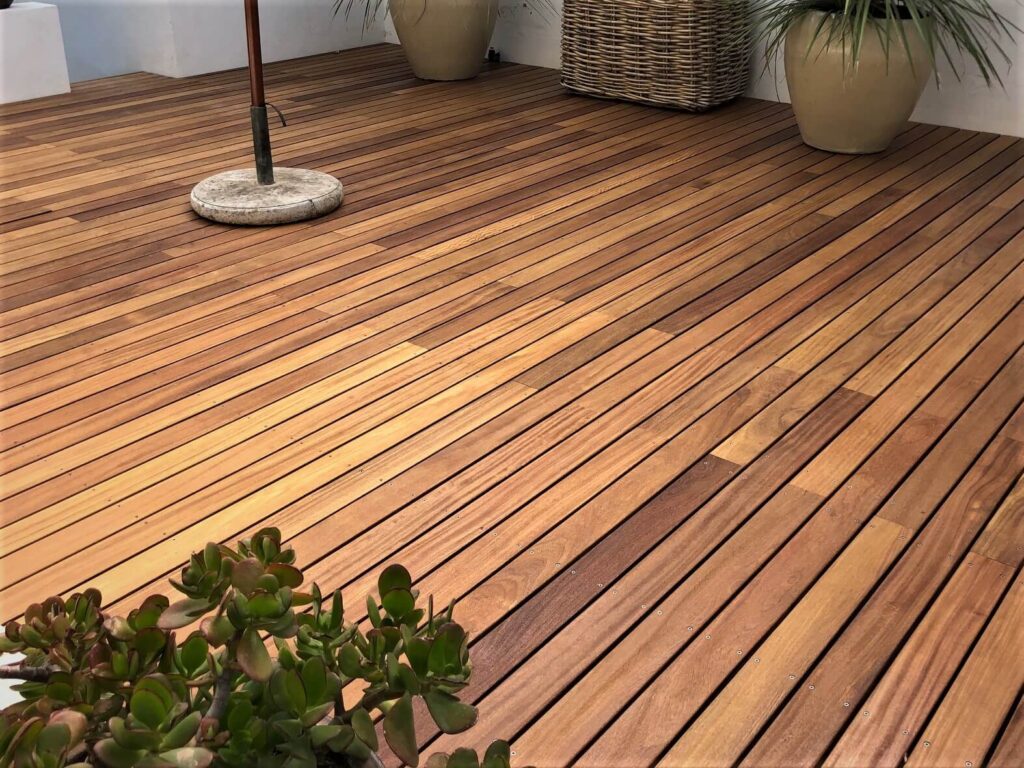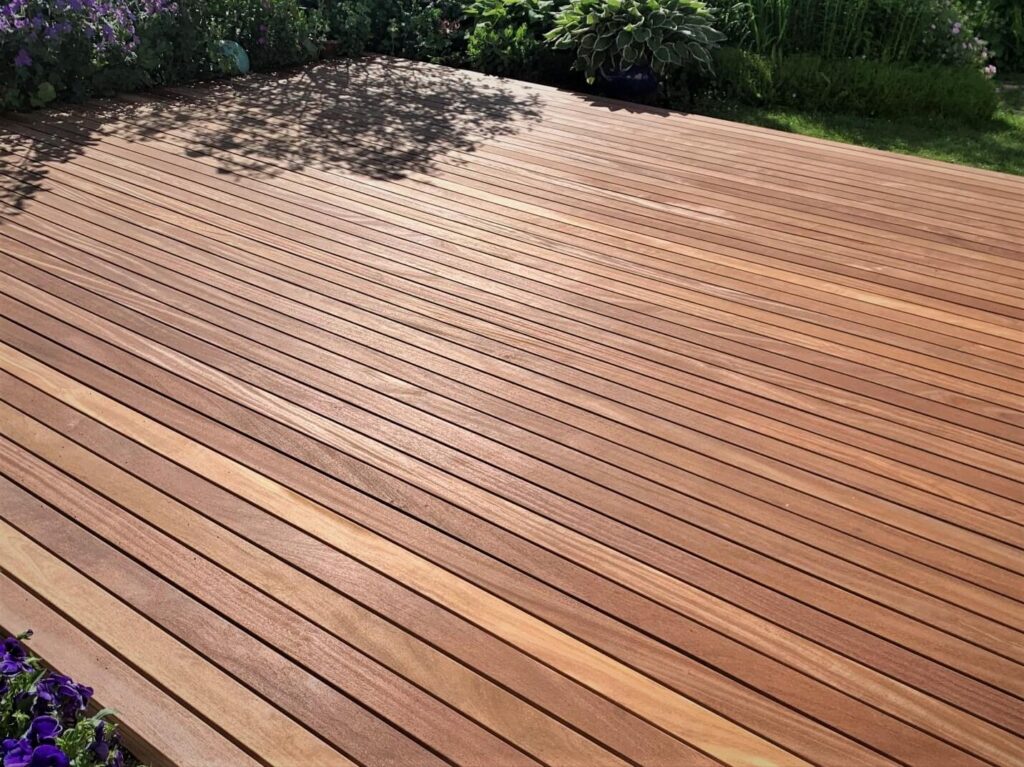Ipe is one of the most popular woods for an outdoor deck. However, these Brazilian natives can be very expensive.
Thankfully, there is the Cumaru wood. Also, from Southern America with similar characteristics to Ipe. However, this timber is far more affordable than Ipe.
Being affordable means your dream of having a hardwood outdoor deck is possible. With Cumaru wood decking, you can have a stylish outdoor area complementing your house.

Advantages of Cumaru wood decking
The first benefit of having cumaru is the price. Even though it’s an exotic wood, Cumaru is still more affordable than other hardwood. The timber also scores high enough on the Janka scale.
When you have a Cumaru decking, you should notice its gorgeous reddish hue. This is because red Cumaru is the one people use the most for an outdoor deck.
You can expect to find multiple hardwood qualities in a Cumaru floor. It has good thermal insulation, is moisture and rot-resistant, and is durable.
Cumaru wood is a durable and rot-resistant option for building decks. It is known for its resistance to termites, dry wood borers, mildew, and mold.
Additionally, it has a “Class A” fire rating and a lifespan of over 50 years.
It is also easy to maintain and has an aesthetically appealing finish. Furthermore, it is naturally strong, doesn’t need chemical treatment, and is 100% biodegradable, making it eco-friendly.
It also has a moderate price point making it a great alternative to other woods such as Ipe.

Disadvantages of Cumaru wood decking
However, cumaru is notorious for shrinking and is less durable than other hardwoods. It also has a coarse grain that makes it vulnerable to chipping.
Cumaru is also famous as Brazilian teak, and some suppliers even name this wood teak. So you need to double-check with your supplier to know if you’re purchasing the American teak or a Cumaru.
Cumaru wood can be challenging for decking due to its density, interlocked grain, and high oil content. These factors can make installation difficult and may require specialized hardware or pre-drilling.
Additionally, the silica in the wood can dull cutting tools, and the wood itself is heavy, stiff, and hard to work with, making the process labor-intensive.

Cumaru Wood Properties
Cumaru wood is a quality wood, very hard, especially suitable for exteriors, where it competes with others such as Ipé.
It is native to the American continent, more specifically from Central America and northern South America.
Its scientific name is Dipterix spp. It is common for some people to call it Brazilian teak, although it has nothing to do with teak wood.
Cumaru is an abundant wood, so its price, if we compare it with other similar ones such as Ipé, is not high.
Characteristics of Cumaru wood
The heartwood of Cumaru wood tends to be a medium to dark brown color, with some pieces displaying a reddish or purplish tint. Occasionally, there may be yellowish or greenish-brown streaks present.
The grain of Cumaru is generally straight, although it can sometimes appear intertwined. The medium density of this wood is approximately 1,020 kg/m³ at 12% humidity.
It is considered a very hard wood, with a hardness of 11.0, according to the Chaláis-Meudon test.
Cumaru wood has excellent durability and resistance to rot, making it suitable for outdoor use. However, it can be susceptible to attacks from certain insects.

Dimensional stability
Cumaru timber has a volumetric contraction coefficient of 0.49% and a ratio of contractions at 1.4%, without any tendency to deform.
Mechanical Properties
Cumaru wood has a static bending resistance of 1,780 kg/cm², a modulus of elasticity of 220,000 kg/cm² and a parallel compression resistance of 680 kg/cm².
Workability
Working with Cumaru lumber is challenging due to its hardness, which makes it difficult to saw and work by hand.
Cumaru wood hardness also causes accelerated wear on tools. Drying this material can be slow and may result in cracks, deformations, and foundation issues.
Brushing it is also difficult and may lead to peeling in cases where fibers are intertwined.
Sizing it can also be problematic due to the abundance of tannins. When nailing and screwing, pre-drilled knockouts are necessary. Finishing the material requires good sanding due to the potential for peeling.
Additionally, the material has a slight cinnamon and vanilla smell when being worked on. There are no known toxicity risks associated with this material.
Cumaru wood Uses
Cumaru wood is highly versatile and can be used in various applications. However, it may not be suitable for situations where a lightweight material is needed.
Some examples of its uses include outdoor flooring or decking, exterior carpentry such as doors and windows, and interior carpentry such as moldings, baseboards, coverings, plates, cooperage, building, and turning.

Air-dried or Kiln dried Cumaru decking?
Suppliers used to have air-dried Cumaru on their list. However, this type of lumber has many issues, primarily moisture retention.
The process of letting the wood dry outside, therefore, retains some moisture. If you choose air-dried cumaru for your deck, you must be ready to replace the deck sooner than you should.
Thankfully there is the kiln-dried method that can lower the moisture content. This method also will give your cumaru hardwood decking a more luxurious and rich color.
But most importantly, it can reduce the moisture level to only 10-12% and solve the volatility. Most cumaru you find today is already kiln-dried, but you can always ask for confirmation.

Cumaru decking VS Ipe Decks
Cumaru often comes up as the alternative for the Ipe. Both are exotic woods from the southern American region with bold patterns and gorgeous natural colors.
While the retail price may vary, you can see that a cumaru panel will only cost you about half of the Ipe panel board.
However, this wood is less durable than the Ipe, so, Cumaru is not as good as IPE if you compare it to its durability.
Cumaru wood is also more volatile, with a history of sudden shrinking. Therefore, you need to avoid installing your deck in the dry season.
Ipe wood is far more durable and heavier. It’s also more elastic in terms of volatility. The correct treatment won’t dramatically shrink or give you headaches for at least thirty years.
You may think that Cumaru provides a wider range of colors than Ipe. This is partially correct, although grey wood has recently returned to popularity.
And untreated Ipe and Cumaru wood decking can turn grey after years under the sun. Eventually, it all comes down to how big your budget is.

What do you need to know before installation of Cumaru decking?
Before you start working on a Cumaru decking, you should know that you may need a permit to install the deck.
Do the due diligence and check with the local authorities to see if you need an inspector checking on the deck before the installation. This is to ensure that your deck meets the safety regulation.
Remember to prepare the area underneath the deck to prevent weeds from growing. And if you live in a rural area, you must be careful of wild animals nesting underneath the deck.
Do all the necessary steps, such as having gravel or putting a plastic sheet underneath the deck.
The overall design for the deck, including a plan for lights and wiring, must be ready before the installation.
Even though you just put a deck as an extension of your porch, you still need to consider how long you will spend there. Therefore, the correct lighting and wiring are necessary.
Please don’t forget to allow Cumaru decking boards to acclimate to the project site’s environmental conditions for 10 days before installing them.
This can be accomplished by inserting spacers or stickers between boards to promote airflow and natural drying.
To provide the greatest results, you should store the materials in a flat, dry, and covered before installation. Shrinkage can occur when damp or saturated boards are installed.

Cumaru decking Installation
Proper ventilation is crucial to ensure its longevity and prevent warping when you want to build a deck. Without enough ventilation, moisture can seep in from the outside and accumulate under the deck’s joists.
To prevent this, it’s a good idea to slope the soil under the deck away from the house and cover it with plastic.
Additionally, you can leave a small gap of 1/8 of an inch between the deck boards, allowing for proper drainage and airflow.
Many options are available if you want to secure your decking boards, such as face screws, kerf and clips, grabber bars, Camo, and ProPlug.

How to maintain a Cumaru deck?
Cumaru hardwood comes in two colors, red and yellow. As it ages, it develops a pleasant and consistent appearance.
This wood type is low-maintenance because it doesn’t absorb much moisture. It’s also incredibly durable, with a 25-35 years lifespan, as it belongs to durability class 1.
You can clean your cumaru floor with only three tools. Those are water, soap, and a stiff brush. You can sweep the floor or use a mop or a garden hose to clean the deck.
Contrary to popular belief, you should avoid cleaning your cumaru floor with a pressure washer. The pressure can be too much and gives sandblasting to the timber. As you know, cumaru has coarser grains than other hardwoods, so they chip easily.
Any commercial cleaner and brightener work on your deck. You can use them to clean the paint and other coatings when you do regular maintenance or rework the deck.
However, it would help if you heeded the supplier’s guide to cleaning your wooden deck. Make sure that you follow the instructions to avoid ruining your deck.
